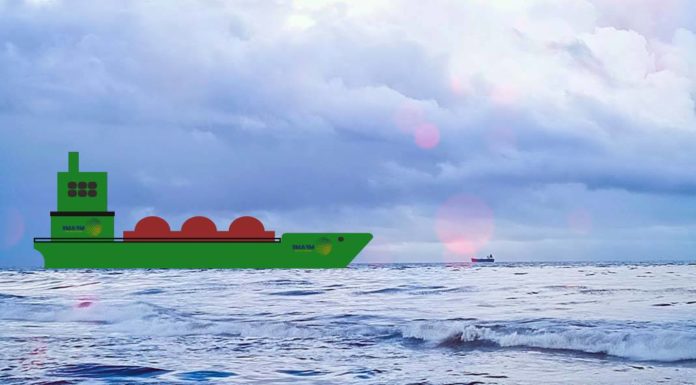- Banks still provide more than $40 billion a year to the shipping industry.
- For companies seeking to raise equity or find other forms of debt, the Norwegian bond market has been reliable but is relatively small.
- The U.S. capital markets have issued no term B loans, which typically mature within six to seven years and produce high yields, have been issued in more than two years.
According to an article published in Benzinga News, the sunny location of a Marine Money International presentation — the Cayman Islands — belied the dreary current state of ship financing.
Shipping industry – highs and endless lows
“Shipping, as you all know, is a highly cyclical industry, with tremendous highs and endless lows, and the past decade has been one that most of us would rather forget. And ship finance is no different. Yes, some of us made money. Some of you raised money, but as a whole, industry returns were abysmal. In only four out of the previous 10 years did the industry have a positive total return to shareholders. That is, if you owned shares in every shipping company at the start of the year and sold them at the end of the year, you lost money — sometimes a lot of money,“ said Campbell Houston, a senior research analyst with Marine Money, a Connecticut-based firm that says it bridges the gap between shipowners and the international capital markets through its publications and forums.
Industry debt-ridden and liquidated
Houston was in the Cayman Islands earlier this month to provide a lending and capital markets update at the annual conference of the Women’s International Shipping & Trading Association (WISTA).
“Multiple companies which raised over $100 million in IPOs in the late 2000s are gone. Others still exist but are so debt-ridden and so liquid that they can only be described as zombies. While there are some investors that seek the volatility that our industry so regularly provides, today if you sit down with an institutional investor and say you’re from a shipping company, they’re most likely going to pull out your chair and politely asked you to leave,“ Houston said.
He said funding for shipowners “has plummeted nearly 40% over the last few years. Once-leading banks like HSH and Royal Bank of Scotland are gone. Those banks financed our industry for over a century. And gone too are the days when you met your banker in a pub and by the second round had agreed to 80% financing for your five newbuildings.”
Banks come to the rescue
Banks still provide more than $40 billion a year to the shipping industry, Houston said, “but today only the largest and most creditworthy shipowners with long-standing relationships can regularly access bank finance.”
For companies seeking to raise equity or find other forms of debt, the Norwegian bond market has been reliable but is relatively small. And in the U.S. capital markets, no term B loans, which typically mature within six to seven years and produce high yields, have been issued in more than two years, he said.
“There hasn’t been a large public equity offering in over a year — for an IPO since 2016,“ Houston said, asserting that for many companies, “the only deal you can make in the capital markets today is a share buyback, which, coupled with an expectation for healthy dividends in 2020, may finally convince some investors to get back into the industry. But it hasn’t happened yet; 2019 is on track for the lowest amount raised during a cycle — so low that the total capital market proceeds are less than half of the next lowest total from the last 10 years.“
Chinese leases to finance foreign vessels
He said since a law enacted in 2012 allowed Chinese leases to finance foreign vessels, “Chinese lessors have been making waves across the industry. When they first entered the market, the product was largely limited to newbuildings from Chinese yards, but today, any ship, from any yard, new or secondhand, can be financed with a Chinese lease. A dozen lessors will provide nearly $13 billion to the industry this year, making them the No. 2 source of finance behind only syndicated lending.”
There is some good news
“The impacts of IMO 2020 and a series of geopolitical events have driven an anticipated rise in freight rates during the second half of this year. IMO 2020 will take an estimated 2,400 ships out of service for the installation of scrubbers, while older, thirstier ships are more likely to be scrapped than be faced with these higher fuel prices,“ he said.
“The attack on the Saudi oil refinery and the sanctions that the U.S. placed on COSCO briefly drove crude carrier rates to near astronomical levels. But it is the improving supply and demand over most sectors that is driving a sustainable increase in rates,“ Houston continued.
He further added, “With rising newbuilding prices, limited availability of financing and technological uncertainty, it has stemmed the rampant over-ordering that has plagued our industry. For most sectors, the orderbook has stood at less than 5% for several years now. Regulations on ballast water and sulfur plus expected regulation on carbon have made some owners unwilling to invest.“
“We are in an unusual period of uncertainty for what the best way to build a ship is today,” Houston said. “Meanwhile, yards have raised newbuilding prices after offering loss-making discounts and historical low newbuilding rates that attracted so many new orders. In addition to the general capital shortfall across the industry, banks and investors have made environmental considerations a key criteria in providing finance, meaning the limited capital available goes to a highly selective number of products.”
Ship values are rising
“Two-thirds of ship values have risen this year and equities are up over 30%. Though most companies continue to trade below their historic EV-to-EBITDA ratios [enterprise value to earnings before interest, taxes, depreciation and amortization], price of NAV [net asset value] improved dramatically, with some companies today trading at or above NAV. With the universal focus on returning value to shareholders, we should see share prices continue to rise, and analysts have placed buy ratings for companies across the board,“ he said.
Houston cautioned, however, that “.”these lean times force discipline and sophistication on our industry. Financiers are among those leading the adoption of ESG [environmental, social and governance criteria] in our industry. The Poseidon Principles, which were launched this summer in New York, are a major commitment from banks to reduce environmental impacts on our industry. Institutional investors and endowments are increasingly scrutinizing their investments to ensure they’re aligning with their goals and policies. Owners who do not adopt rigorous ESG standards will be faced with a narrowing of options for financing
Did you subscribe to our daily newsletter?
It’s Free! Click here to Subscribe!
Source: BenzingaNews















